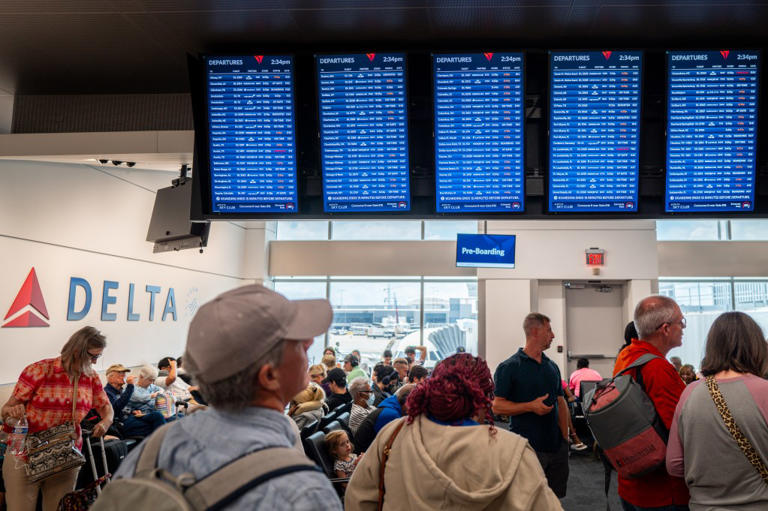The recent CrowdStrike outage has created a substantial financial impact on US Fortune 500 companies, excluding Microsoft, amounting to estimated losses of $5.4 billion, according to cloud insurer Parametrix. The outage, triggered by a faulty update to CrowdStrike’s security software, caused significant disruptions across various sectors, including airlines and healthcare. This event highlighted the critical reliance on cybersecurity software and the vulnerability of even the most robust systems.
The global tech disruption specifically affected computers powered by Microsoft Windows, leading to flight delays and the postponement of medical procedures. This illustrates how deeply interconnected and dependent modern industries are on reliable cybersecurity measures. While cyber insurance policies are anticipated to cover only 10% to 20% of the losses, amounting to approximately $540 million to $1.08 billion, many companies are left facing considerable out-of-pocket expenses due to large risk retentions.
Parametrix CEO Jonathan Hatzor mentioned that Microsoft’s financial losses would also be significant, potentially reaching hundreds of millions of dollars. Despite not being primarily responsible for the outage, Microsoft has been substantially affected due to its extensive operational scale and brand prominence. Hatzor explained that although CrowdStrike is chiefly accountable for the incident, Microsoft’s association with the outage has led to significant operational expenses and reputational damage. This situation underscores the complex dynamics of responsibility and impact in the realm of cybersecurity failures.
The outage serves as a critical reminder of the inherent vulnerabilities in current cybersecurity frameworks. The weighted average loss per Fortune 500 company is estimated at $44 million, with substantial variance across industries. For instance, manufacturers are projected to incur losses of around $6 million each, whereas airlines may face losses averaging $143 million. The healthcare and banking sectors, despite constituting only 20% of Fortune 500 revenues, are expected to bear 57% of the total financial impact, with healthcare experiencing the largest direct financial losses, followed by banking and airlines.
Hatzor emphasized the necessity for companies to transition from physical computing systems to cloud-based platforms. He noted that recovery was notably faster and more efficient for cloud-based companies compared to traditional sectors like healthcare and airlines. This observation highlights the agility and resilience offered by cloud infrastructure in mitigating the impact of cybersecurity incidents. Furthermore, Hatzor advised businesses to focus on identifying their key points of failure and developing redundancy plans to mitigate the impact of similar outages in the future. This involves a detailed reassessment of insurance policies to ensure adequate coverage against potential disruptions, underscoring the importance of proactive risk management.
The widespread impact of the outage was particularly evident in New York City, where around 40,000 computers were still non-operational as of Tuesday. The number of affected devices escalated from an initial 90,000 to 300,000 over the weekend, illustrating the extensive reach of the incident and its profound impact on operational continuity.
In light of this significant disruption, Hatzor’s recommendations underscore the importance of adopting resilient cloud-based systems and comprehensive risk management strategies to safeguard against future outages. Companies are encouraged to conduct thorough evaluations of their cybersecurity frameworks and insurance policies to bolster their defenses and ensure sustained operational continuity. As the digital landscape continues to evolve, the lessons learned from the CrowdStrike outage will be crucial in shaping more robust and resilient cybersecurity practices across industries.
